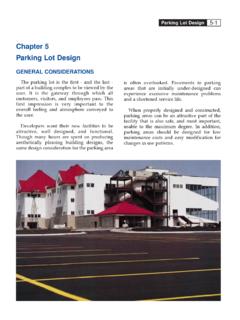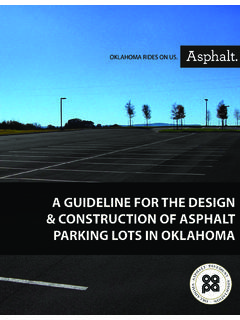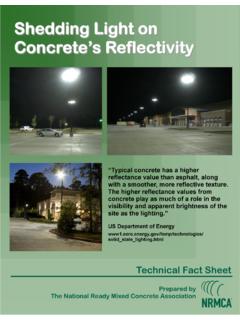Transcription of Steel Spike Method: Recommended for Asphalt or Gravel ...
1 Steel Spike Method: Recommended for Asphalt or Gravel surfaces only. Tools needed: High speed hammer drill with a 7/16" masonry bit. Small sledge hammer for driving spikes. 1. Position the parking block where you want to install it. Using the holes molded in the parking block as templates, mark the location of each hole on the Asphalt surface. 2. Remove the parking block. Using a high-speed hammer drill with a 7/16" masonry bit, drill a pilot hole at each marked location: a) to avoid fracturing the Asphalt with the Spike and b) to make it easier to drive the spikes in during installation.
2 Note: If you are working with either a thin layer of Asphalt or a soft substrate, you may want to cover each Spike with a small amount of activated epoxy resin immediately before driving the Spike in place. This will help hold the parking block flat. 3. Reposition the parking block so that the molded in holes line up vertically with the pilot holes you drilled. Starting with the center hole, use the hammer to drive the spikes through the parking block until the head of the Spike is snug against the counter bored holes in the parking block.
3 DO NOT DRIVE BEYOND "SNUG"! If driven too far, the spikes or hammer may damage the parking block and will void the warranty. Lag Bolt Method: Recommended for Asphalt or Concrete only. Tools needed: High speed hammer drill with a 3/4" masonry drill bit. Impact wrench or heavy ratchet with 3/4" socket. 1. Position the parking block where you want to install it. Using the holes molded in the parking block as templates, mark the location of each hole on the surface. 2. Remove the parking block. Using a high-speed hammer drill with 3/4" masonry bit, drill a 4 to 4 deep hole at each marked location.
4 3. Insert a lag anchor (with the large round hole in the anchor facing up) into each hole. Tap the anchor into the holes with a hammer so that the top of each anchor is flush with the surface. 4. Reposition the parking block so that the molded in holes line up vertically with the pilot holes you drilled. Beginning in the center hole, apply firm hand pressure. Slip a washer onto a lag bolt, insert the bolt through the hole in the parking block and tighten the bolt about three quarters of the way with a 3/4" socket. Repeat for each hole in the parking block.
5 Finish tightening each bolt until just snug. DO NOT OVER TIGHTEN! Excessive tightening may damage the parking block and will void the warranty. Concrete Bolt Method: Suitable for Concrete only. Tools needed: High speed hammer or appropriate drill with a 7/16" masonry drill bit. Impact wrench or heavy ratchet with 3/4" socket. 1. Position the parking block where you want to install it. Using the holes molded in the parking block as templates, mark the location of each hole on the concrete surface. 2. Remove the parking block.
6 Using a drill with 7/16" masonry bit, drill a hole approximately: deep for Commercial, Industrial & Rubber parking Blocks deep for Economy Solid parking Blocks 3. Reposition the parking block so that the molded in holes line up vertically with the pilot holes you drilled. Insert the concrete bolts through the holes in the parking block and tighten the bolts with a 3/4" socket. Finish tightening each bolt until just snug. DO NOT OVER TIGHTEN! Excessive tightening may damage the parking block and will void the warranty.




